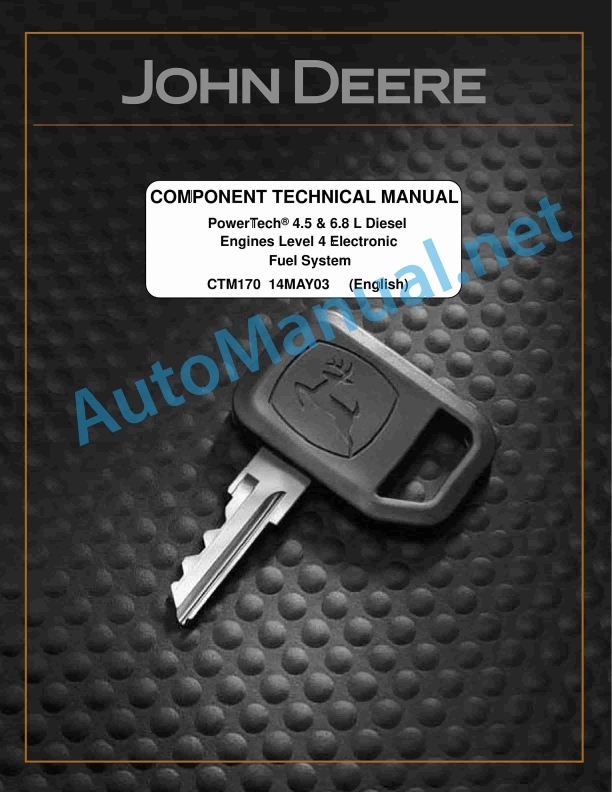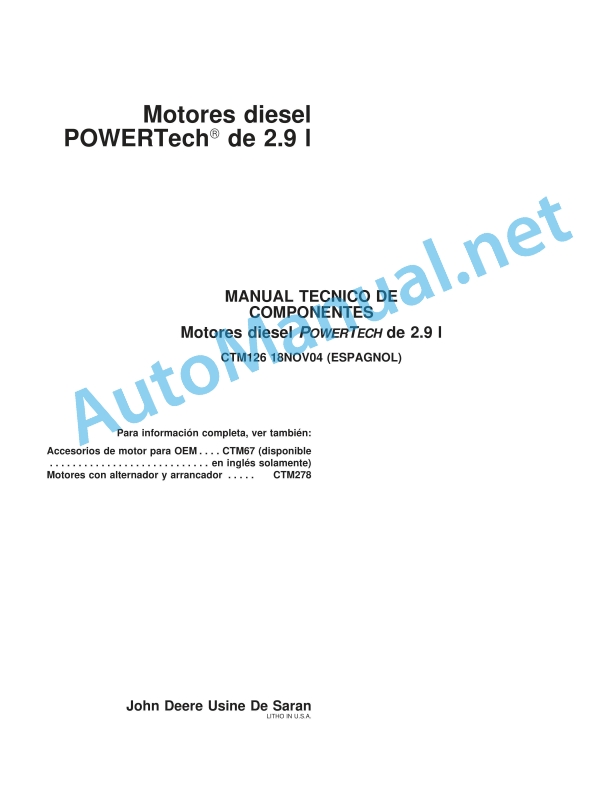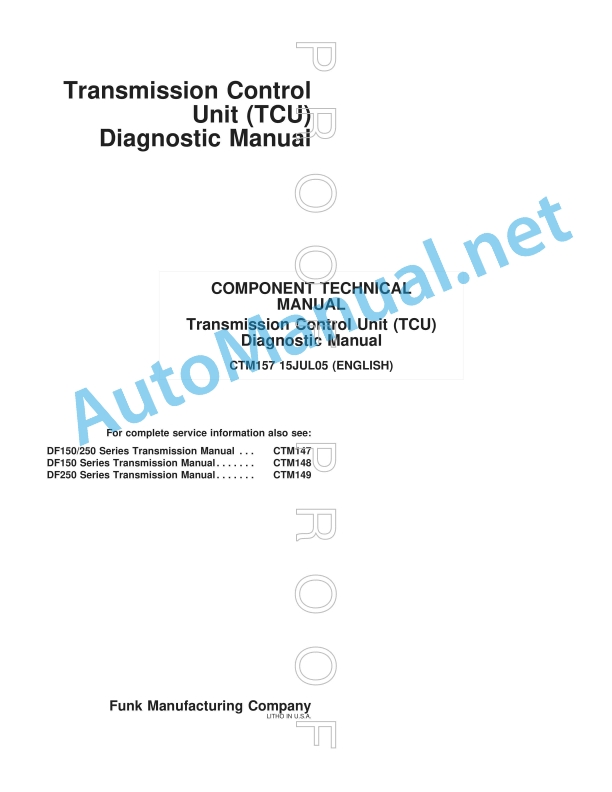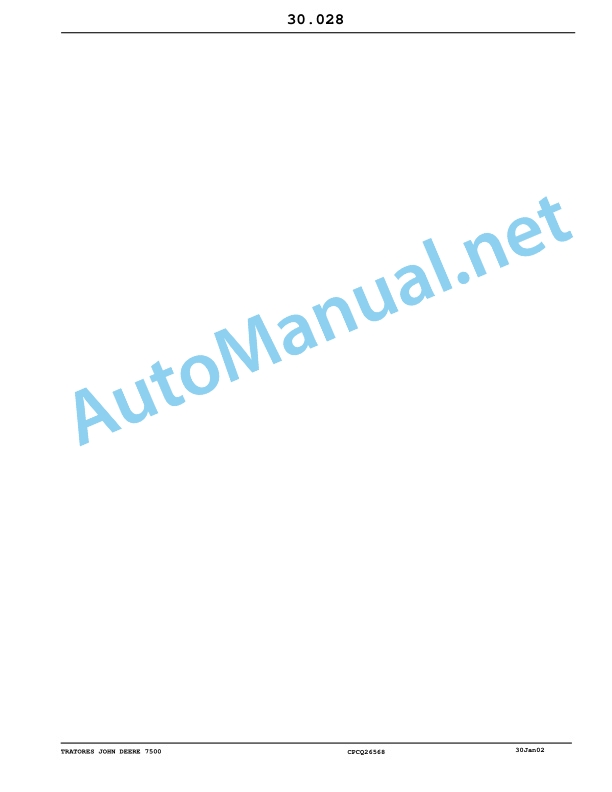Claas Liner 4800 Trend Business (G20) Swathers Operator Manual ES
$50.00
- Model: Liner 4800 Trend Business (G20) Swathers
- Type Of Manual: Operator Manual
- Language: ES
- Format: PDF(s)
- Size: 52.0 MB
File List:
00 2348 961 2.pdf
00 2348 962 2.pdf
00 2348 961 2.pdf:
1. Introduction
1.1 Information regarding the instruction manual
1.1.1 Validity of the manual
1.1.2 Information about this instruction manual
1.1.3 Symbols and indications
1.1.4 Optional equipment
1.1.5 Qualified specialized workshop
1.1.6 Information regarding warranty
1.1.7 Spare parts and technical issues
1.2 Proper application of the machine
1.2.1 Proper machine application
1.2.2 Logically foreseeable inappropriate application
2 Security
2.1 Recognize warning signs
2.1.1 Danger symbols
2.1.2 Keyword
2.2 Safety instructions
2.2.1 Meaning of the instruction manual
2.2.2 Observe graphic danger symbols and alarm indications
2.2.3 Requirements for all people working with the machine
2.2.4 Children in danger
2.2.5 Danger zones
2.2.6 Position yourself between the tractor and the machine
2.2.7 Accompanying persons
2.2.8 Couple the tractor with the machine
2.2.9 Risk of injury due to rotating shafts
2.2.10 Construction modifications
2.2.11 Optional equipment and spare parts
2.2.12 Control of the machine in operation
2.2.13 Operation only after correct commissioning
2.2.14 Technical status
2.2.15 Danger due to machine breakdowns
2.2.16 Comply with technical limit values
2.2.17 Danger due to coasting parts
2.2.18 Maintain functional protection devices
2.2.19 Personal protective equipment
2.2.20 Wear appropriate clothing
2.2.21 Remove dirt and loose objects
2.2.22 Prepare the machine for road traffic
2.2.23 Dangers when driving on the road and in the countryside
2.2.24 Park the machine safely
2.2.25 Parking without supervision
2.2.26 Unsuitable consumables
2.2.27 Safe handling of consumables and auxiliary materials
2.2.28 Environmental protection and waste disposal
2.2.29 Fire protection
2.2.30 Deadly electrical discharge through overhead lines
2.2.31 Behavior in the case of an overhead line voltage transfer and lightning strike
2.2.32 Liquids under pressure
2.2.33 Hot surfaces
2.2.34 Work only on the stopped machine
2.2.35 Maintenance work and repair work
2.2.36 Machine parts and lifted loads
2.2.37 Danger from welding work
2.3 Safety signage
2.3.1 Structure of graphic hazard symbols
2.3.2 Position of warning symbols on the machine
3 Machine Description
3.1 Summary and operation
3.1.1 Machine overview
3.1.2 Machine operating mode
3.2 Optional equipment
3.2.1 Brake intensity regulator*
3.2.2 Hydraulic sequential control*
3.2.3 Work lighting*
3.2.4 PLUS* operation
3.2.5 Windrowing canvas*
3.2.6 Pick holder support*
3.2.7 Spare wheel*
3.3 Identification plates and identification numbers
3.3.1 Machine identification plate
3.4 Machine information
3.4.1 Adhesive on the machine
4 Control and display instruments
4.1 Control elements
4.1.1 Parking brake*
4.1.2 Stopcock
4.1.3 Support leg
4.1.4 Raking height crank
4.2 Indicator elements
4.2.1 Arrows
4.2.2 Steering stop indicator
4.2.3 Raking height scale
5 Technical data
5.1 LINER 4800 TREND
5.1.1 Dimensions
5.1.2 Weights
5.1.3 Tractor requirements
5.1.4 Version
5.1.5 Tire pressure
5.1.6 Lubricants
5.2 LINER 4700 TREND
5.2.1 Dimensions
5.2.2 Weights
5.2.3 Tractor requirements
5.2.4 Version
5.2.5 Tire pressure
5.2.6 Lubricants
6 Preparation of the machine
6.1 Turn off the machine and secure it
6.1.1 Shut down and secure the machine and tractor
6.1.2 Secure the lifted machine
6.2 Adapt the tractor
6.2.1 Front axle counterbalancing
6.2.2 Check the tractor power take-off protection device
6.3 Adapt the machine
6.3.1 Check the length of the cardan shaft and shorten it
6.3.2 Adapt the length of the cardan shaft
6.3.3 Assemble the cardan shaft to the machine
6.3.4 Adjust the height of the support leg
6.4 Hooking up the machine
6.4.1 Remove the security lock*
6.4.2 Attach the hitch bracket
Secure drawbar hooks so they cannot be opened accidentally
6.4.3 Assemble the cardan shaft
6.4.4 Lay out the pull rope
6.4.5 Connect the hydraulic hoses, without individual lifting*
Summary of hydraulic connections
Connect the hydraulic hoses to raise and lower the front swath rotors and main frame
Connect the hydraulic hoses to remove and insert the front swath rotors
Connect the hydraulic hose to raise the rear swath rotors
6.4.6 Connect hydraulic hoses with individual lift*
Summary of hydraulic connections with individual lifting*
Connect the hydraulic hoses to raise and lower the front swath rotors and main frame
Connect the hydraulic hoses to remove and insert the front swath rotors
Connect the hydraulic hoses to raise the rear swath rotors
Connect the hydraulic hose to raise the right front swath rotor
6.4.7 Connect the pneumatic brake*
6.4.8 Connect the hydraulic brake*
6.4.9 Plug in the lighting cable
6.4.10 Rotate the support leg upwards
6.4.11 Release the parking brake*
6.4.12 Remove the shims
6.5 Unhooking the machine
6.5.1 Park the machine safely
6.5.2 Folding the lighting support
6.5.3 Put the shims underneath
6.5.4 Apply the parking brake*
6.5.5 Turn the support leg downwards
6.5.6 Unplug the lighting cables
6.5.7 Disengage the air brake*
6.5.8 Disengage the hydraulic brake*
6.5.9 Uncouple the hydraulic hoses, without individual lifting*
6.5.10 Uncouple the hydraulic hoses, with individual lifting*
6.5.11 Deposit the pull rope
6.5.12 Dismantle the cardan shaft
6.5.13 Unhook the coupling bracket
6.5.14 Engage the safety lock*
6.6 Prepare for road traffic
6.6.1 Deploy the lighting support
6.6.2 Fold the machine into transport position
6.6.3 Close the stopcock
6.6.4 Insert the protective bars
6.6.5 Check before driving on the road
6.7 Prepare for use at work
6.7.1 Remove protective bars
6.7.2 Open the stopcock
6.7.3 Deploy the machine to the working position
6.8 Load the machine
6.8.1 Maneuver the machine
Maneuvering pulling vehicles without pneumatic braking equipment
6.8.2 Load the machine
7 Management
7.1 Driving on the road
7.1.1 Adjust transport height
7.1.2 Circulation on public roads
7.2 Settings for use at work
7.2.1 Adjust the longitudinal chassis
7.2.2 Adjust swath width
Adjust the row width in the base position
Transformation to maximum row width
Adjustment after transformation to maximum swath width
7.2.3 Adjust the inclination of the swath rotors
Basic regulation
Adjustment for heavy forage or large amounts of forage
Maximum setting
7.2.4 Adjust the raking height
7.2.5 Adjust the height of headboards
7.2.6 Adjust hydraulic sequential control*
Adjust time lag when uploading.
Adjust time lag when downloading.
Deactivate the hydraulic sequential control.
7.2.7 Adjust the swath cloth*
Adjust the height of the swath cloth
Windrowing without swath cloth
Lock the swath cloth.
Unlock the swath canvas.
7.3 Use at work
7.3.1 Pick up and remove the main chassis
7.3.2 Fold the machine into transport position
7.3.3 Deploy the machine to the working position
7.3.4 Raise the swath rotors to the headland position
7.3.5 Adjust the working width
7.3.6 Using the machine
7.3.7 Adapt the power take-off speed
7.4 CEMIS 10*
7.4.1 CEMIS 10 Recommendations
7.5 Turning CEMIS 10* on and off
7.5.1 Turn on the terminal
7.5.2 Turn off the terminal
7.6 CEMIS 10* transport position
7.6.1 Fold the machine into transport position
7.7 CEMIS 10* working position
7.7.1 Deploy the machine to the working position
7.8 CEMIS 10 individual lifting with a hydraulic control
7.8.1 Individual lifting of the front swath rotors
7.8.2 Lower the front swath rotors individually
7.9 CEMIS 10 individual lift with two hydraulic controls
7.9.1 Operation with two hydraulic controls
8 Incident and solution
8.1 Chassis
8.1.1 Main chassis incidents
8.1.2 Change wheel on the main chassis
8.1.3 Change the feeler wheel
8.2 Electrical installation
8.2.1 Faulty lighting
9 Maintenance
9.1 Summary of maintenance intervals
9.1.1 Before harvest
9.1.2 After the first 10 hours of service
9.1.3 After the first 50 hours of service
9.1.4 Every 8 hours of operation or daily
9.1.5 Every 50 hours of service
9.1.6 Every 100 hours of service
9.1.7 Every 250 hours of service or annually
9.1.8 Every 500 hours of service or annually
9.1.9 Every 2 years
9.1.10 After harvest
9.2 Gearbox
9.2.1 Check the tightness of the gear
9.2.2 Check the front timing gear oil level
9.2.3 Change the front timing gear oil
9.2.4 Check the rear timing gear oil level
9.2.5 Change rear timing gear oil
9.2.6 Check the bevel gear oil level
9.2.7 Change bevel gear oil
9.2.8 Check the swath gear oil level
9.2.9 Change the swath gear oil
9.2.10 Check the swath gear screws
9.3 Clutch
9.3.1 Check the clutch
9.3.2 Ventilate the friction clutch
9.3.3 Clean the clutch
9.4 Cardan shaft
9.4.1 Maintenance of cardan shafts
9.4.2 Check the cardan shaft nuts
9.5 Chassis
9.5.1 Check tire pressure
9.5.2 Check the fixation of the wheel axles
9.5.3 Check the wheel nuts on the main chassis
9.5.4 Check the wheel nuts on the swath rotor chassis
9.5.5 Check the stop screws on the 4-wheel swath rotor chassis
9.5.6 Check the stop screws on the 6-wheel swath rotor chassis
9.6 Brake
9.6.1 Check the brake system*
9.6.2 Empty the water from the compressed air tank*
9.6.3 Clean the pipe air filter*
9.6.4 Adjust the air brake linkage locator*
9.6.5 Check the brake cylinder bores*
9.7 Hydraulic installation
9.7.1 Change the hydraulic oil filter
9.7.2 Check the hydraulic hoses
9.8 Windrower rotor
9.8.1 Check the bolted connection of the swath rotors
9.8.2 Check pressure springs
9.8.3 Oil the profile of the tine holder
9.8.4 Check the spring
9.8.5 Check the tines
9.8.6 Check the slat plugs
9.9 Assembly and body parts
9.9.1 Check the bolted connection of the hitch bar
9.9.2 Check the bolted connection of the frame
9.9.3 Eliminate crop remains
9.9.4 Clean the machine
9.9.5 Maintain the machine
9.9.6 Prevent frost damage
9.9.7 Check the fixing material
9.10 Greasing scheme
9.10.1 Grease the lubrication points every 50 hours of service
9.10.2 Grease the lubrication points every 100 hours of service
9.10.3 Grease the lubrication points every 250 hours of service
10 Decommissioning and waste disposal
10.1 General information
10.1.1 Decommissioning and waste disposal
11 Declaration of conformity
11.1 LINER 4800/4700 TREND
11.1.1 EC declaration of conformity
12 Technical dictionary and abbreviations
12.1 Terms and explanations
12.1.1 Technical vocabulary
12.1.2 Abbreviations
00 2348 962 2.pdf:
1. Introduction
1.1 Information regarding the instruction manual
1.1.1 Validity of the manual
1.1.2 Information about this instruction manual
1.1.3 Symbols and indications
1.1.4 Optional equipment
1.1.5 Qualified specialized workshop
1.1.6 Information regarding warranty
1.1.7 Spare parts and technical issues
1.2 Proper application of the machine
1.2.1 Proper machine application
1.2.2 Logically foreseeable inappropriate application
2 Security
2.1 Recognize warning signs
2.1.1 Danger symbols
2.1.2 Keyword
2.2 Safety instructions
2.2.1 Meaning of the instruction manual
2.2.2 Observe graphic danger symbols and alarm indications
2.2.3 Requirements for all people working with the machine
2.2.4 Children in danger
2.2.5 Danger zones
2.2.6 Position yourself between the tractor and the machine
2.2.7 Accompanying persons
2.2.8 Couple the tractor with the machine
2.2.9 Risk of injury due to rotating shafts
2.2.10 Construction modifications
2.2.11 Optional equipment and spare parts
2.2.12 Control of the machine in operation
2.2.13 Operation only after correct commissioning
2.2.14 Technical status
2.2.15 Danger due to machine breakdowns
2.2.16 Comply with technical limit values
2.2.17 Danger due to coasting parts
2.2.18 Maintain functional protection devices
2.2.19 Personal protective equipment
2.2.20 Wear appropriate clothing
2.2.21 Remove dirt and loose objects
2.2.22 Prepare the machine for road traffic
2.2.23 Dangers when driving on the road and in the countryside
2.2.24 Park the machine safely
2.2.25 Parking without supervision
2.2.26 Unsuitable consumables
2.2.27 Safe handling of consumables and auxiliary materials
2.2.28 Environmental protection and waste disposal
2.2.29 Fire protection
2.2.30 Deadly electrical discharge through overhead lines
2.2.31 Behavior in the case of an overhead line voltage transfer and lightning strike
2.2.32 Liquids under pressure
2.2.33 Hot surfaces
2.2.34 Work only on the stopped machine
2.2.35 Maintenance work and repair work
2.2.36 Machine parts and lifted loads
2.2.37 Danger from welding work
2.3 Safety signage
2.3.1 Structure of graphic hazard symbols
2.3.2 Position of warning symbols on the machine
3 Machine Description
3.1 Summary and operation
3.1.1 Machine overview
3.1.2 Machine operating mode
3.2 Optional equipment
3.2.1 Brake intensity regulator*
3.2.2 Ground speed sensor*
3.2.3 Speed signal cable*
3.2.4 ISOBUS connection cable*
3.2.5 Battery cable*
3.2.6 Work lighting*
3.2.7 Windrowing canvas*
3.2.8 Pick holder support*
3.2.9 Spare wheel*
3.3 Identification plates and iification numbers
3.3.1 Machine identification plate
3.4 Machine informat 3.4.1 Adhesive on the machine
4 Control and display instruments
4.1 Control elements
4.1.1 Stopcock
4.1.2 Parking brake*
4.1.3 Support leg
4.1.4 Raking height crank*
4.1.5 CEMIS 700* Terminal
4.1.6 CEMIS 100* Terminal
4.2 Indicator elements
4.2.1 Steering stop indicator
4.2.2 Raking height scale
5 Technical data
5.1 LINER 4900 BUSINESS
5.1.1 Dimensions
5.1.2 Weights
5.1.3 Tractor requirements
5.1.4 Version
5.1.5 Tire pressure
5.1.6 Lubricants
5.2 LINER 4800 BUSINESS
5.2.1 Dimensions
5.2.2 Weights
5.2.3 Tractor requirements
5.2.4 Version
5.2.5 Tire pressure
5.2.6 Lubricants
5.3 LINER 4700 BUSINESS
5.3.1 Dimensions
5.3.2 Weights
5.3.3 Tractor requirements
5.3.4 Version
5.3.5 Tire pressure
5.3.6 Lubricants
6 Preparation of the machine
6.1 Turn off the machine and secure it
6.1.1 Shut down and secure the machine and tractor
6.1.2 Secure the lifted machine
6.2 Adapt the tractor
6.2.1 Front axle counterbalancing
6.2.2 Check the tractor power take-off protection device
6.2.3 Assemble CEMIS 100*
6.2.4 Assemble CEMIS 700*
6.3 Adapt the machine
6.3.1 Check the length of the cardan shaft and shorten it
6.3.2 Adapt the length of the cardan shaft
6.3.3 Assemble the cardan shaft to the machine
6.3.4 Adapt the hydraulic installation
Closed hydraulic system (constant pressure or Load Sensing)
Open hydraulic system
Load-Sensing Hydraulic Connection Position
6.3.5 Adjust the height of the support leg
6.4 Hooking up the machine
6.4.1 Remove the security lock*
6.4.2 Attach the hitch bracket
Secure drawbar hooks so they cannot be opened accidentally
6.4.3 Assemble the cardan shaft
6.4.4 Connect the hydraulic hoses
6.4.5 Connect the pneumatic brake*
6.4.6 Connect the hydraulic brake*
6.4.7 Plug in the lighting cable
6.4.8 Connect the terminal to the tractor without ISOBUS socket
6.4.9 Connect the terminal to the tractor with ISOBUS socket box
6.4.10 Connect the battery cable*
6.4.11 Rotate the support leg upwards
6.4.12 Release the parking brake*
6.4.13 Remove the shims
6.5 Unhooking the machine
6.5.1 Park the machine safely
6.5.2 Folding the lighting support
6.5.3 Put the shims underneath
6.5.4 Apply the parking brake*
6.5.5 Turn the support leg downwards
6.5.6 Unplug the lighting cables
6.5.7 Remove the terminal
6.5.8 Disengage the air brake*
6.5.9 Disengage the hydraulic brake*
6.5.10 Uncouple the hydraulic pipes
6.5.11 Dismantle the cardan shaft
6.5.12 Unhook the coupling bracket
6.5.13 Engage the safety lock*
6.6 Prepare for road traffic
6.6.1 Deploy the lighting support
6.6.2 Fold the machine into transport position
6.6.3 Insert the protective bars
6.6.4 Check before driving on the road
6.7 Prepare for use at work
6.7.1 Remove protective bars
6.7.2 Deploy the machine to the working position
6.8 Load the machine
6.8.1 Maneuver the machine
Maneuvering pulling vehicles without pneumatic braking equipment
6.8.2 Load the machine
7 Management
7.1 Driving on the road
7.1.1 Adjust transport height
7.1.2 Circulation on public roads
7.2 Settings for use at work
7.2.1 Adjust the longitudinal chassis
7.2.2 Adjust the inclination of the swath rotors
Basic regulation
Adjustment for heavy forage or large amounts of forage
Maximum setting
7.2.3 Adjust the raking height
Adjust the raking height with a terminal*
Adjust the raking height with the crank*
7.2.4 Adjust the swath cloth*
Adjust the height of the swath cloth
Windrowing without swath cloth
Lock the swath cloth.
Unlock the swath canvas.
7.3 Use at work
7.3.1 Operate the machine with an ISOBUS or CEMIS 100 terminal
7.3.2 Fold the machine into transport position
7.3.3 Deploy the machine to the working position
7.3.4 Raise the swath rotors to the end-of-field position
7.3.5 Setting the working width and row width
7.3.6 Individual lifting
7.3.7 Using the machine
7.3.8 Adapt the power take-off speed
8 Incident and solution
8.1 Emergency management
8.1.1 Indications regarding emergency management
8.1.2 Summary of hydraulic valves
Left side
Right side
8.1.3 Work steps before emergency handling
8.1.4 Manually operate hydraulic valves
8.2 Chassis
8.2.1 Main chassis incidents
8.2.2 Change wheel on the main chassis
8.2.3 Change the feeler wheel
8.3 Electrical installation
8.3.1 Faults in the electrical installation
8.3.2 Defective lighting
8.3.3 Defective work lights*
9 Maintenance
9.1 Summary of maintenance intervals
9.1.1 Before harvest
9.1.2 After the first 10 hours of service
9.1.3 After the first 50 hours of service
9.1.4 After the first 200 hours of operation
9.1.5 Every 8 hours of operation or daily
9.1.6 Every 50 hours of service
9.1.7 Every 100 hours of service
9.1.8 Every 250 hours of service or annually
9.1.9 Every 500 hours of service or annually
9.1.10 Every 2 years
9.1.11 Every 5 years
9.1.12 After harvest
9.2 Gearbox
9.2.1 Check the tightness of the gear
9.2.2 Check the front timing gear oil level
9.2.3 Change the front timing gear oil
9.2.4 Check the rear timing gear oil level
9.2.5 Change rear timing gear oil
9.2.6 Check the bevel gear oil level
9.2.7 Change bevel gear oil
9.2.8 Check the swath gear oil level
9.2.9 Change the swath gear oil
9.2.10 Check the swath gear screws
9.3 Clutch
9.3.1 Check the clutch
9.3.2 Ventilate the friction clutch
9.3.3 Clean the clutch
9.4 Cardan shaft
9.4.1 Maintenance of cardan shafts
9.4.2 Check the cardan shaft nuts
9.5 Chassis
9.5.1 Check tire pressure
9.5.2 Check the fixation of the wheel axles
9.5.3 Check the play of the wheel bearings in the main chassis
9.5.4 Check the wheel nuts on the main chassis
9.5.5 Check the wheel nuts on the swath rotor chassis
9.5.6 Check the stop screws on the 4-wheel swath rotor chassis
9.5.7 Check the stop screws on the 6-wheel swath rotor chassis
9.6 Brake
9.6.1 Check the brake system*
9.6.2 Empty the water from the compressed air tank*
9.6.3 Clean the pipe air filter*
9.6.4 Adjust the air brake linkage locator*
9.6.5 Check the brake cylinder bores*
9.7 Electrical installation
9.7.1 Check ground speed sensor*
9.8 Hydraulic installation
9.8.1 Change the hydraulic oil filter
9.8.2 Check the hydraulic hoses
9.9 Windrower rotor
9.9.1 Check the bolted connection of the swath rotors
9.9.2 Check pressure springs
9.9.3 Oil the profile of the tine holder
9.9.4 Check the spring
9.9.5 Check the tines
9.9.6 Check the slat plugs
9.10 Assembly and body parts
9.10.1 Check the bolted connection of the hitch bar
9.10.2 Check the bolted connection of the frame
9.10.3 Eliminate crop remains
9.10.4 Clean the machine
9.10.5 Maintain the machine
9.10.6 Prevent frost damage
9.10.7 Check the fixing material
9.11 Greasing scheme
9.11.1 Grease the lubrication points every 50 hours of service
9.11.2 Grease the lubrication points every 100 hours of service
9.11.3 Grease the lubrication points every 250 hours of service
10 Decommissioning and waste disposal
10.1 General information
10.1.1 Decommissioning and waste disposal
11 Declaration of conformity
11.1 LINER 4900 / 4800 / 4700 BUSINESS
11.1.1 EC declaration of conformity
12 Technical dictionary and abbreviations
12.1 Terms and explanations
12.1.1 Technical vocabulary
12.1.2 Abbreviations
John Deere Repair Technical Manual PDF
John Deere Repair Technical Manual PDF
John Deere Repair Technical Manual PDF
John Deere Repair Technical Manual PDF
John Deere Repair Technical Manual PDF
John Deere Repair Technical Manual PDF
John Deere Diesel Engines POWERTECH 2.9 L Component Technical Manual CTM126 Spanish
John Deere Repair Technical Manual PDF
John Deere Transmission Control Unit Component Technical Manual CTM157 15JUL05
John Deere Parts Catalog PDF
John Deere Tractors 7500 Parts Catalog CPCQ26568 30 Jan 02 Portuguese























